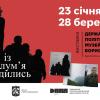Feed aggregator
"Корпус та дискурс" на ФЛ
В КПІ ім. Ігоря Сікорського відбулась ІV Міжнародна науково-практична онлайн-конференція "Корпус та дискурс", організована кафедрою англійської мови технічного спрямування №1 факультету лінгвістики. Захід об'єднав понад 100 учасників з різних країн світу – аспірантів, молодих дослідників, викладачів і академіків.
If you can't submit to this sub because you're getting a "You can't contribute to this community yet" message, please know that it's Reddit doing it, not the sub.
If you have an on-topic submission *, please tell the moderators and we can post it for you.
(*) The focal point of a submission must be component-level electronic engineering, design, news, and circuits (with at least one active element: a semiconductor or a vacuum tube/valve).
(*) Questions not allowed.
[link] [comments]
Anatomy of MCUs for motor control

Control MCUs increase performance and efficiency of motor control and power conversion systems by enabling real-time control of systems that need to respond to real-time events with minimal delay and low utilization. These MCUs are targeted at battery-powered applications with motors, large appliances, HVAC units, and power supplies for server farms and cloud computing centers.
Read full story at EDN’s sister publication, Planet Analog.
Related Content
- Advances in MCUs ease motor control
- Optimizing MCUs for EV Motor Control
- Microcontrollers for Motor Control Systems
- MCUs specializing in motor control, power conversion
- Designer’s Guide to High-Performance Motor Control for Robotics
The post Anatomy of MCUs for motor control appeared first on EDN.
Thorlabs acquires strategic partner Praevium Research
Турнір з футзалу пам’яті Віталія Івановича Молчанова 2025
Уже вшосте в спорткомплексі КПІ ім. Ігоря Сікорського відбувся щорічний традиційний турнір з футзалу пам’яті Віталія Івановича Молчанова — справжнього професіонала, видатного освітянина, професора факультету електроніки й до того ж — багаторічного голови Профкому працівників Київської політехніки. Саме профком нашого університету і проводить цей турнір.
Vacuum Tubes (1943) [found footage; covers basic tube and RF rx/tx theory; I found it quite enjoyable so thought to share]
![Vacuum Tubes (1943) [found footage; covers basic tube and RF rx/tx theory; I found it quite enjoyable so thought to share] Vacuum Tubes (1943) [found footage; covers basic tube and RF rx/tx theory; I found it quite enjoyable so thought to share]](https://external-preview.redd.it/_YCih_2ayM0fcaqL6gFvEX_VZVxY-TQnyRAkVto2xm8.jpg?width=320&crop=smart&auto=webp&s=2a450cdbdcd0411c69a2ab1e1a30ef60d67d77ae) | submitted by /u/russellmzauner [link] [comments] |
US CHIPS Incentives Program awards finalized for Corning, Edwards Vacuum and Infinera
A beginner’s guide to power of IQ data and beauty of negative frequencies – Part 2
 Introduction and editor’s note
Introduction and editor’s note
This is a two-part series where DI authors Damian and Phoenix Bonicatto explore the IQ signal representation and negative frequencies. Part 1 explains the commonly used SDR IQ signal representation and negative frequencies without the complexity of math.
This final part (Part 2) presents a device that allows you to play with and display live SDR signal spectrums with negative frequencies.
Wow the engineering world with your unique design: Design Ideas Submission Guide
Defining real and imaginary signalsLet’s start off with something I left out on purpose in Part 1, there are two more terms we will use: A “real” signal is a term used for the signal represented by the I data. “Imaginary” signal is the term used for the signal represented by the Q data. I left them out until now as they add to the obfuscation of the discussion. Just take them at face value as there is nothing imaginary about an “imaginary” signal.
The “I/Q Explorer” designOkay, so what we are going to make is an Arduino Nano based device that can generate “real” and “imaginary” data (I and Q samples) per your settings of frequency, amplitude, and phase. Then it will display a spectrum showing positive and negative frequencies. We will not use the FFT feature of your scope, we will generate the spectrum in the MCU and send it out to the oscilloscope to form a trace in the shape of the spectrum. In fact, we will generate a spectrum for the real signal, imaginary signal, and the magnitude of the combination (this is the square root of the sum of the squares of the real and imaginary signals).
We will refer to this design as the I/Q Explorer (Figure 1).
 Figure 1 The final I/Q Explorer design with an LCD for displaying menu items and values and a toggle switch to switch the scope between the time and frequency domains.
Figure 1 The final I/Q Explorer design with an LCD for displaying menu items and values and a toggle switch to switch the scope between the time and frequency domains.
Let’s look at the schematic in Figure 2.

Figure 2 The schematic of the IQ Explorer device with an Arduino Nano, 4×20 LCD, two rotary encoders, a simple toggle switch, three analog outputs, three lines to go to the scope probes, a digital output, and BNC connectors.
You can see the I/Q Explorer has a relatively simple schematic. It’s based on an Arduino Nano and uses a 4×20 LCD for displaying menu items and values. The two rotary encoders are used to navigate through the menu and to change values. A simple toggle switch is used to change the scope view from the time domain to frequency domain. There are three analog outputs, created using PWM outputs and single pole RC low-pass filters. The three lines go to the scope probes (you don’t need to connect all three if you don’t have a 4-channel scope). There is also a digital output used as a trigger to sync the scope to the analog outputs. The only other electrical parts are two BNC connectors which can be used if you want to get signals from a signal generator, instead of the internal generated signals.
The test stand itself can be easily 3D printed (a link to the 3D files and Arduino code are at the end of the article). The test stand provides a place to mount the LCD, rotary encoders and the time/frequency switch. Two BNC connectors can be installed on the left side. On the right side is a place to install four wires that will be used to clip the scope probe on (you also need to clip one of the leads to a ground). The rest on the circuitry can be laid out on a small solderless breadboard. The breadboard then fits on the back of the test stand. A document showing more images, BOM, and additional instructions can be found in the download from the link at the end of the article.
Using the I/Q ExplorerOk, what can you do with it now? First, the left side of the test stand has four bare wires that are used to connect the scope probes (also connect one scope probe ground to digital ground on the breadboard. The top wire is the real data, the next one down is the imaginary data, then the magnitude, and the bottom one is the trigger. Connect the real, imaginary, and magnitude to the three inputs of your scope (if you only have a two-channel scope, you can connect the real and imaginary only, without missing much). The trigger can be connected to the last scope channel or to the external trigger of your scope.
Now, set the Freq/Time switch to Freq. On your scope, set the vertical to 2v/div, for each of the inputs. Also set the sweep to 20ms/div.
Now you can power the system via the USB connection on the Arduino Nano. Spread out the traces on the scope and set the scope to trigger using the trigger input. You can now hide the trigger trace. The traces should look like what we see in Figure 3.

Figure 3 The starting spectrum from -2500 to +2500 Hz where there is signal energy at both -1500 and +1500 Hz.
Now adjust the horizontal position so the traces are centered. Ignore the time axis on the bottom and the voltage axis on the right side—they are irrelevant (turn them off if your scope has such a feature). The left-to-right axis is frequency with -2500 Hz on the left side and +2500 Hz on the right side. DC or 0 Hz is the center line. (On scopes with 10 major horizontal markings, each major marking measures off 500 Hz increments.) Vertical is only a relative, auto-scaled, value so it is best to keep the volts/div the same for the real, imaginary, and magnitude traces. So, in Figure 3 you can see we have signal energy at both +1500 Hz and -1500 Hz. (Note, on boot up the real signal is 100 while the imaginary amplitude is 0.)
You will see a menu on the I/Q Explorer LCD. Rotating the left rotary encoder will allow you to move up and down in the menu. The right rotary encoder allows you to change the values of the menu item next to the flashing cursor (second line from the top of the LCD). In the menu you can change the frequency, amplitude and the phase of the real (I data) or imaginary (Q data) signals.) Note that changing the frequency of either the real or imaginary will change the other—they need to be at the same frequency.) The menu also has items to print data, plot data, turn on/off windowing, turn on/off a mixer, and change the source for the FFT from the internal generated data to external signal from a signal generator.
As a sanity check, Figure 4 is a plot of the real output from a simulation package using the same signals, sample rate, and number of samples. These are as follows: The real signal used has an amplitude of 100 and the imaginary signal has an amplitude of 0. The frequency of both is 1500 Hz. The sample rate is 5000 samples/second and the number of samples used in the FFT is 64.

Figure 4 Real FFT simulation using the same settings where the real signal has an amplitude of 100, the imaginary signal has an amplitude of 0, the frequency of both is 1500 Hz, the sample rate is 5000 samples/second, and the number of samples used in the FFT is 64.
You can see that the real signal matches nicely.
Adjusting real and imaginary signal settingsLet’s change the imaginary signal so it has the same amplitude as the real signal. Set the imaginary amplitude to 100. Now we get the following in Figure 5.

Figure 5 The FFT when imaginary and real amplitudes are the same (set to 100).
You can see we only have a signal at +1500 Hz…there is no negative frequency component.
If we flip the Freq/Time to “Time” you will be able to see the time domain samples used to generate the FFT, without adjusting anything on the scope.
Mixer modeNow let’s try quadrature (complex-to-complex) mixing. Move down in the menu and turn on “Mixer” (more on moving and adjusting settings in the download). This will do the mix using the real and imaginary signals you have sets, and a fixed signal having its real and imaginary setting of 1000 Hz, and amplitudes of 100 and phases set to 0. What you will at first is shown in Figure 6.

Figure 6 Quadrature mixing of 1500 Hz with 1000 Hz showing the signal at 500 Hz and an image created at 2000 Hz.
You can see two things. First, the signal is now at 500 Hz, the difference of 1500 Hz from our signal and the 1000Hz from the mix signal. Second, there is an image created at 2000 Hz (1500 Hz + 500 Hz) but it has been removed by the mathematics of the mixer.
Next change the frequency of the real or imaginary signal (remember one will change the other) to 500 Hz. Also note, as you turn the dial, the FFT frequency will slide down as you approach 500 Hz. And as you go past 1000 Hz you will see the FFT in the negative frequency area. When you get to 500 Hz you will see this in Figure 7.

Figure 7 Quadrature (complex-to-complex) mixing of 500 Hz with 1000 Hz.
You now have generated a negative frequency—as simple as that.
Note that you can also see the plot, of any of the displayed FFTs, on the PC by using the “Serial Plot” selection. You can also get a view of the numerical data by using the “Serial Print Data” selection.
More fun IQ manipulationSo now that you’ve seen a few examples, you can explore I/Q data and quadrature mixing by changing things like the amplitude of the real and/or imaginary signals. Also, try changing the phase of signals. After you get a grasp of that try changing the phase of either. To get a real handle on this, see if you can manipulate the trig equations to better understand how you get to that FFT. The system also has a windowing function, you can play with, that adjusts amplitudes of the data points before the FFT is calculated (for those who know these things, it is a Hann window).
Remember, you can also use actual external signals, such as those from a two-channel signal generator, to perform the same tests. You’ll note though, the FFTs are not quite as stable. There is more information on that in the downloadable notes.
One last thought; you’ll find lots of discussion on whether negative frequencies are real (in the traditional sense) or not. My two cents is they are not physically real as they cannot be transmitted as a single waveform, but they are a very nice mathematical construct that allows us to manipulate the signals that we can receive. Let the arguing begin.
To download 3D printable files and document containing more operating info, a BOM, and extra photo, visit: https://makerworld.com/en/models/1013533#profileId-993290
The Arduino Nano code can be found at: Arduino Nano code can be found at: https://github.com/DamianB2/IQ_Explorer
Damian Bonicatto is a consulting engineer with decades of experience in embedded hardware, firmware, and system design. He holds over 30 patents.
Phoenix Bonicatto is a freelance writer.
Related Content
- A beginner’s guide to power of IQ data and beauty of negative frequencies – Part 1
- Exploring software-defined radio (without the annoying RF) – Part 1
- Exploring software-defined radio (without the annoying RF)—Part 2
- SDR Basics Part 3: Transmitters
- The virtual reality of 5G – Part 2 (measurements)
- Ultra-wideband I/Q demodulator improves receiver performance
The post A beginner’s guide to power of IQ data and beauty of negative frequencies – Part 2 appeared first on EDN.
Антикорупційний комікс від студенток КПІ: від ідеї до перемоги у всеукраїнському конкурсі
У молодіжному творчому конкурсі "Разом проти корупції! Твоє бачення має значення", що проводився Міністерством оборони України з нагоди Міжнародного дня боротьби з корупцією, друге місце вибороли студентки другого курсу факультету соціології і права КПІ ім.
Innoscience files lawsuits against Infineon in China
🏰 Запрошуємо на виставку «Із полумʼя зродились»
Запрошуємо на виставку «Із полумʼя зродились» у КПІ ім. Ігоря Сікорського, яку присвячено українським військовим, волонтерам та медикам!
Мистецтво лікує. Майстер-класи "Малюй з воїном"
Люди, які зіткнулися з травматичними подіями – стали свідками або учасниками війни, терористичних актів, природних катастроф чи насильства, – можуть мати проблеми із психікою. За даними Всесвітньої організації охорони здоров'я, кожна п'ята особа, яка мала травматичний досвід, потребує психологічної реабілітації. Одним із дієвих методів роботи з психотравмами є арттерапія.
📣 Команда «Прозорих міст» росте, розвивається та пропонує одразу аж три круті вакансії!
Наразі шукають:
Nvidia, TSMC, and advanced packaging realignment in 2025

Nvidia’s CEO Jensen Huang has made waves by saying that his company’s most advanced artificial intelligence (AI) chip, Blackwell, will transition from CowoS-S to CoWoS-L advanced packaging technology. That also shows how TSMC’s advanced packaging technology—chip on wafer on substrate (CoWoS)—is evolving to overcome interconnect battles inside large, powerful chips for AI and other high-performance computing (HPC) applications.
The CoWoS-S advanced packaging technology uses a single silicon interposer and through-silicon vias (TSVs) to facilitate the direct transmission of high-speed electrical signals between the die and the substrate. However, single silicon interposers often confront yield issues.
On the other hand, CoWoS-L, TSMC’s latest packaging technology, uses a local silicon interconnect (LSI) along with an RDL interposer to form a reconstituted interposer (RI) to enhance chip design and packaging flexibility. It also preserves the attractive feature of CoWoS-S in the form of TSVs while mitigating the yield issues arising from the use of large silicon interposers in CoWoS-S.
According to Reuters, Nvidia is selling its Blackwell chips as quickly as TSMC can manufacture them, but packaging has become a bottleneck due to capacity constraints. That’s startling because, as Huang noted, the amount of advanced packaging capacity at TSMC is probably four times the amount available less than two years ago.

Figure 1 CoWoS-L marks a significant advancement over CoWoS-S in terms of performance and efficiency for AI and HPC applications. Source: TSMC
Huang also told Taiwanese reporters that Nvidia is still producing Blackwell’s predecessor, Hopper, using TSMC’s CoWoS-S advanced packaging technology. “It’s not about reducing capacity. It’s actually increasing capacity into CoWoS-L.”
Advanced packaging in flux
Nvidia’s foray into new technology is a stark reminder of how quickly advanced packaging needs are changing. Apparently, the semiconductor industry is eying a new set of advanced packaging building blocks to dramatically increase the bandwidth and interconnect density of AI chips.
TSMC’s CoWoS is a 2.5D semiconductor packaging technology that increases the number of I/O points while reducing interconnect length between logic and memory components. However, emerging HPC workloads, particularly those related to AI training, demand even higher memory bandwidth due to frequent memory accesses.
CoWoS-L can stack up to 12 HBM3 devices at a lower cost than CoWoS-S and thus has the potential to become the mainstream CoWoS technology for future AI chips. Beyond CoWoS-L, TSMC is warming up to co-packaged optics (CPO), which replaces traditional electrical signal transmission with optical communications.

Figure 2 TSMC has made significant progress in its silicon photonics strategy by integrating CPO with advanced semiconductor packaging. Source: TrendForce
The current AI chips use copper interconnects, which increasingly face bottlenecks as bandwidths widen. In CPO, optical interconnect signals can achieve higher bandwidth than their electrical counterparts. For instance, CPO supports up to 1.6 Tbps bandwidth, which is 1.8 times wider than Gen 4 NVLink interconnect used by Nvidia in its current GPUs. Moreover, power consumption is also up to 50% lower.
According to Taiwanese media outlet UDN, TSMC has completed the development of CPO, and it plans to provide CPO samples to two of its major customers, Broadcom and Nvidia, later this year. Furthermore, UDN reports that TSMC plans to scale up the production of CPO in 2026.
AI chips constituting high logic-to-logic and logic-to-memory bandwidth are driving innovations in the advanced packaging realm. The move from CoWoS-S to CoWoS-L and the advent of CPO are harbinger of this pivot in the semiconductor industry ecosystem, which is now increasingly driven by AI applications.
Related Content
- Advanced Packaging and Chiplets Can Be for Everyone
- TSMC crunch heralds good days for advanced packaging
- After TSMC fab in Japan, advanced packaging facility is next
- Understanding the Big Spend on Advanced Packaging Facilities
- Advanced IC Packaging: Fundamentals for the ‘More than Moore’ Era
The post Nvidia, TSMC, and advanced packaging realignment in 2025 appeared first on EDN.
LED lantern with the diffuser removed
 | submitted by /u/4b686f61 [link] [comments] |
This is by far one of the most difficult and ugliest thing I ever built
 | This is a Nixie tube clock I built without using any PCB boards. Basically, it was built via point to point wiring. This thing is far from perfect: it’s all crooked, numbers don’t line up, etc. but I think that’s the allure of building something like this. This will never be perfect. Something like this cannot be built by automation. No 2 clocks will never be identical; if I decided to build another clock like this, I will never build it exactly like this one. This thing is still not perfect; it is failing the self test routine and need to still debug the driver circuits of one of the nixies. It’s almost there though! I’m planning to give my grandfather the ugly nixie clock. It’s something very personal I built with my own hands. He’s in Hawaii, so I’m an ocean away from him. I wish I could visit him every day, but that would be a long daily commute (from California to O’ahu). He doesn’t have much time left on this planet, however, he was the very one that molded me into what I am today. He’s going to get a nixie clock, only one of it’s type in the entire world lol This build was pretty stressful and frustrating, but I absolutely loved every minute of it. [link] [comments] |
Ok i know this is trivial, but wow!
 | I wanna start by saying: I literally just started this hobby today. I know this is an egregiously simple thing and nothing impressive, but holy crap this brought me unbelievable levels of dopamine! I have to say this is one of the coolest things I've done in a long time. Being able to solve some equations and then build this little circuit, and watch the EXACT calculations i came up with pop up on the multimeter is amazing I've done lots of math in my day, but MAN, being able to calculate something on paper then see those results in the real world is simply amazing [link] [comments] |
scope upgrade: happy birthday to me!
 | submitted by /u/mikeblas [link] [comments] |
Weekly discussion, complaint, and rant thread
Open to anything, including discussions, complaints, and rants.
Sub rules do not apply, so don't bother reporting incivility, off-topic, or spam.
Reddit-wide rules do apply.
To see the newest posts, sort the comments by "new" (instead of "best" or "top").
[link] [comments]
Swathi Weapon Locating Radar: A Beacon of Indian Defense Technology
India has steadily emerged as a formidable force in defense technology, with indigenous innovations taking center stage. Among its crowning achievements is the Swathi Weapon Locating Radar (WLR), a state-of-the-art radar system designed to detect and track enemy artillery, mortars, and rockets. Developed by Indian defense engineers, the Swathi radar underscores India’s self-reliance in defense capabilities, offering world-class performance at a competitive cost.
What is Swathi Weapon Locating Radar?Swathi Weapon Locating Radar (WLR) is an advanced radar system designed to locate the origin of hostile artillery fire and pinpoint the location of enemy weapons. It provides critical real-time data to armed forces, enabling them to neutralize threats effectively. The radar has been a game-changer for India’s military and has garnered international attention for its capabilities.
Developed by Indian ExpertiseSwathi WLR was developed indigenously by the Electronics and Radar Development Establishment (LRDE), a division of the Defence Research and Development Organisation (DRDO), in collaboration with Bharat Electronics Limited (BEL). This collaboration brought together cutting-edge radar technology and indigenous manufacturing expertise, resulting in a highly reliable and efficient system tailored to the needs of the Indian Armed Forces.
Swathi Radar: Full Form and SignificanceThe term “Swathi” does not have a conventional acronymic full form; it is a name that symbolizes vigilance and precision. In the context of military technology, it signifies the radar’s ability to scan, detect, and act with unparalleled accuracy, much like its namesake.
Swathi’s significance lies in its ability to act as a force multiplier. By detecting and neutralizing threats before they can cause damage, the radar enhances the strategic and tactical advantage of armed forces in conflict scenarios. It also reduces the dependency on foreign-made radar systems, contributing to India’s ‘Make in India’ initiative.
Technical Features and CapabilitiesThe Swathi Weapon Locating Radar boasts several cutting-edge features that make it a world-class system:
- Detection Range: Swathi WLR has a range of up to 50 kilometers for locating artillery and up to 30 kilometers for detecting mortars and rockets. This extended range ensures early threat detection and effective countermeasures.
- Coverage Area: The radar can simultaneously track multiple targets over a wide area, making it ideal for use in complex battlefield scenarios.
- Accuracy: With high precision, the radar can pinpoint the location of enemy weaponry, providing critical data for swift retaliatory action.
- Mobility: Mounted on a mobile platform, the radar can be rapidly deployed in different terrains, from deserts to mountainous regions.
- Weather Resilience: The radar performs reliably under varied weather conditions, ensuring uninterrupted operation during critical missions.
Swathi WLR is not just a domestic asset; it has also made its mark on the international stage. India’s defense exports have grown significantly, with Swathi being a flagship product. Notably, Armenia has procured the radar system, recognizing its exceptional capabilities and cost-effectiveness. This export marked a significant milestone for India’s defense industry, positioning Swathi as a competitive alternative to systems offered by countries like the United States, Israel, and Russia.
The successful export of Swathi underscores the global recognition of India’s indigenous defense technology. It also reflects India’s growing capability to design and manufacture advanced systems that meet international standards.
Cost-Effectiveness: A Strategic Advantage
One of Swathi’s most compelling aspects is its affordability. Priced significantly lower than similar systems from other countries, Swathi offers an attractive option for nations looking to bolster their defense capabilities without overshooting their budgets. The radar’s competitive pricing, combined with its high performance, has made it an appealing choice for several countries exploring modern defense solutions.
Operational Impact and Applications
Swathi WLR has proven invaluable in enhancing battlefield operations. Here’s how:
- Threat Neutralization: By detecting the source of enemy artillery, the radar allows forces to respond quickly and effectively, neutralizing threats before they escalate.
- Border Security: Deployed along sensitive borders, Swathi provides constant surveillance and tracking, ensuring robust national security.
- Counter-Battery Fire: The radar’s ability to accurately locate enemy firing positions enables counter-battery operations, minimizing damage and ensuring tactical superiority.
- International Peacekeeping: Swathi can be deployed in international peacekeeping missions, where its precision and reliability contribute to maintaining stability in conflict zones.
Future Prospects and Upgrades
To maintain its edge, Swathi radar is expected to undergo periodic upgrades, incorporating advancements in radar and sensor technologies. Future iterations may include enhanced range, better integration with command-and-control systems, and AI-driven analytics for real-time decision-making.
Additionally, with an increasing focus on exports, DRDO and BEL are likely to develop customized versions of Swathi to meet the specific needs of different countries.
Conclusion
The Swathi Weapon Locating Radar is a testament to India’s strides in indigenous defense technology. Combining cutting-edge features with cost-effectiveness, it has become a valuable asset for both domestic and international applications. Its successful deployment and export highlight India’s potential to be a global leader in defense innovation. As Swathi continues to evolve, it will undoubtedly remain a cornerstone of India’s defense strategy and a beacon of technological excellence.
The post Swathi Weapon Locating Radar: A Beacon of Indian Defense Technology appeared first on ELE Times.









